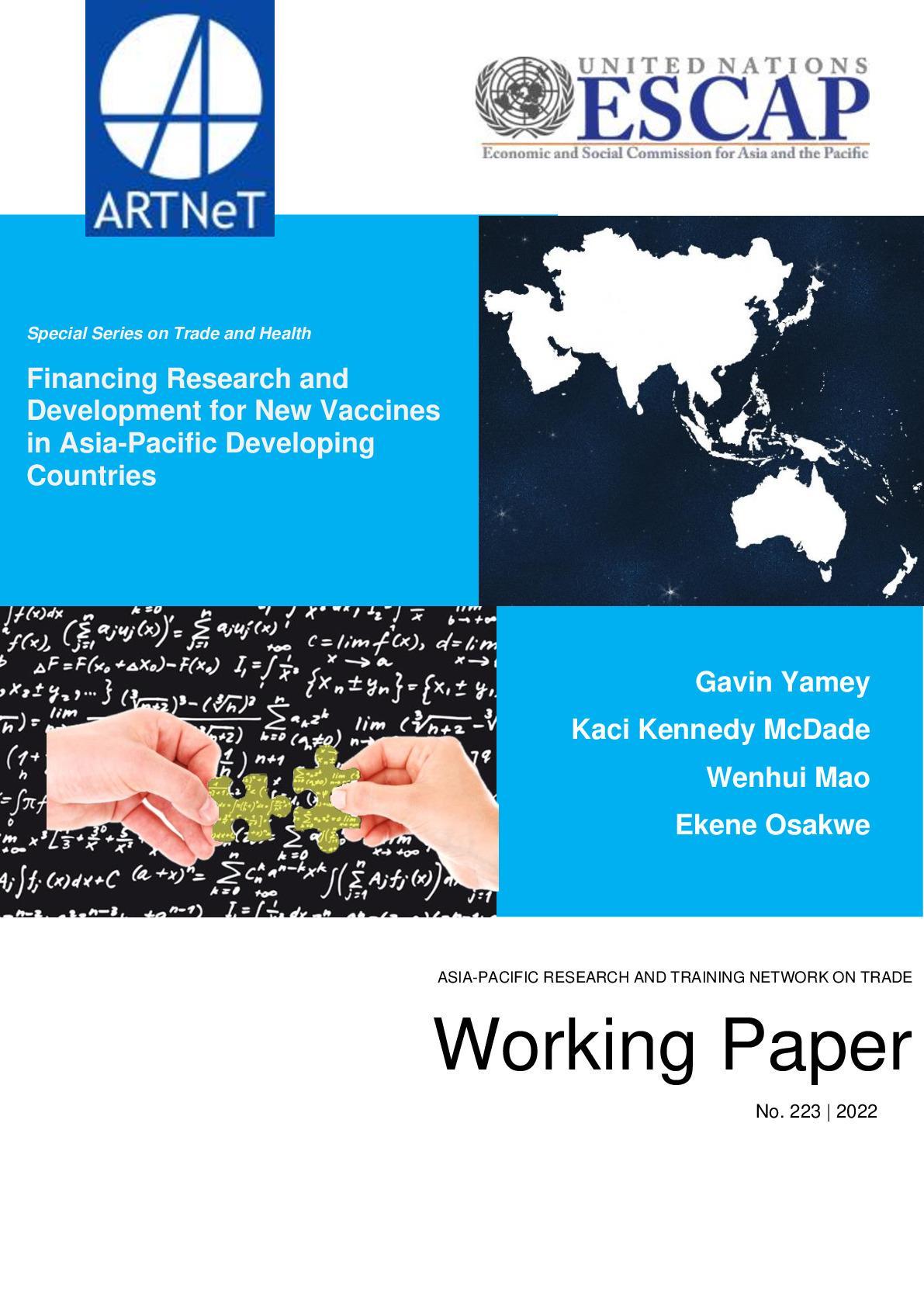Financing Research and Development for New Vaccines in Asia-Pacific Developing Countries

There have been many important innovations in the landscape of vaccine development for neglected and emerging infectious diseases, such as the launch of public-private product development partnerships (PDPs). However, there is still a gap in funding the development of such vaccines, especially when it comes to financing late-stage trials. There is a financial risk in investing in late-stage trials, and there is no guarantee of a commercial market, particularly for the most neglected diseases of poverty. One result of the funding gap is that there are many infectious diseases with a high burden in the Asia-Pacific region for which there are no licensed, highly effective vaccines, including HIV/AIDS, tuberculosis, soil-transmitted helminths and schistosomiasis. There are also neglected infectious diseases that affect populations in the region where the existing vaccines have limitations, such as malaria, dengue, and Japanese encephalitis.
Understanding how much additional financing is needed for vaccine research and development (R&D) for neglected and emerging infections is a crucial first step in closing the financing gap. Annual spending on vaccine R&D for neglected diseases was approximately $1 billion in 2020. Our previous modelling research, using a financial tool called the Portfolio to Impact model, estimated that $3 billion is needed annually, suggesting there is an annual financing gap of $2 billion. For vaccine R&D for emerging diseases, annual spending on the Blueprint diseases was $350 million in 2018, but the annual financing need is approximately $400 million to $520 million, suggesting an annual funding gap of $50 million to $170 million.
How much is the Asia-Pacific region investing in vaccine R&D through the public, private, and philanthropic sectors and via PDPs? Using data from the G-FINDER database, we estimate that from 2018–2020, there was only $35 million annually being invested in the region in neglected disease vaccine R&D and $3.8 million annually being invested in emerging infectious disease vaccine R&D. These are very low levels of financing compared with the need. Despite such low levels of financing, our report finds that there is significant vaccine trials and manufacturing capacity in many developing countries of the region.
Closing the vaccine R&D funding gap in the Asia-Pacific region would have enormous health and economic returns. The various policy approaches to closing this gap can be organized into (1) resource mobilization (e.g. government contributions, airline ticket levies), (2) pooling of resources (e.g. a regional pooled R&D fund), and (3) strategic purchasing (see figure).
